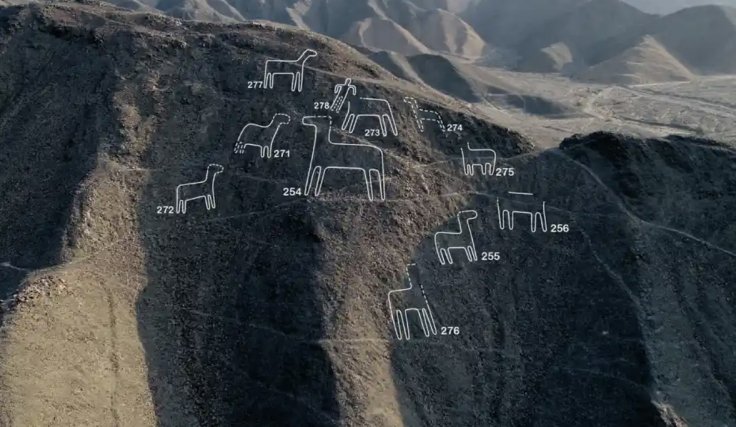Mysterious pre-Columbian artworks, geoglyphs, have come under the spotlight following the discovery of new designs in and around Peru's ancient Nazca plain and surrounding areas.
Peruvian and Japanese researchers from Yamagata University reported the discovery of 168 new designs, following two years of field surveys with aerial photos and drones, at the UNESCO World Heritage site on Peru's southern Pacific coast.
The designs date back more than 2,000 years and represent humans, cats, snakes, killer whales, birds and native camalids (Ilamas, alpacas and guanacos).

Still a Mystery
However, the significance of the designs remains a mystery. Masato Sakai, a professor from Yamagata University who led the study, said the findings are smaller and can be seen from the ground. Researchers have discovered 190 figures in the area since 2004, but the vastness of the terrain the designs cover has complicated efforts to study and conserve the heritage site.
Some researchers believe the shapes either held a sacred purpose or were early irrigation lines, while local guides believe the lines may relate to sources of water or maps of the region. The designs or geoglyphs were created by removing black stones from the surface of the earth to expose a white sandy surface below. But it is unclear how the black stone was removed.
Jorge Olana, head archaeologist for Nazca Lines research program, said the newly discovered figured averaged between 2 and 6 meters in length. Researchers at Yamagata University want to use it in artificial intelligence-based surveys to help inform the lines' preservation.
Various study projects in collaboration with Peru's government have helped delineate and protect the area which is facing threats from urban and economic developments. Sakai said some geoglyphs are in danger of being destroyed because of the recent expansion of mining-related workshops in the archaeological park.









